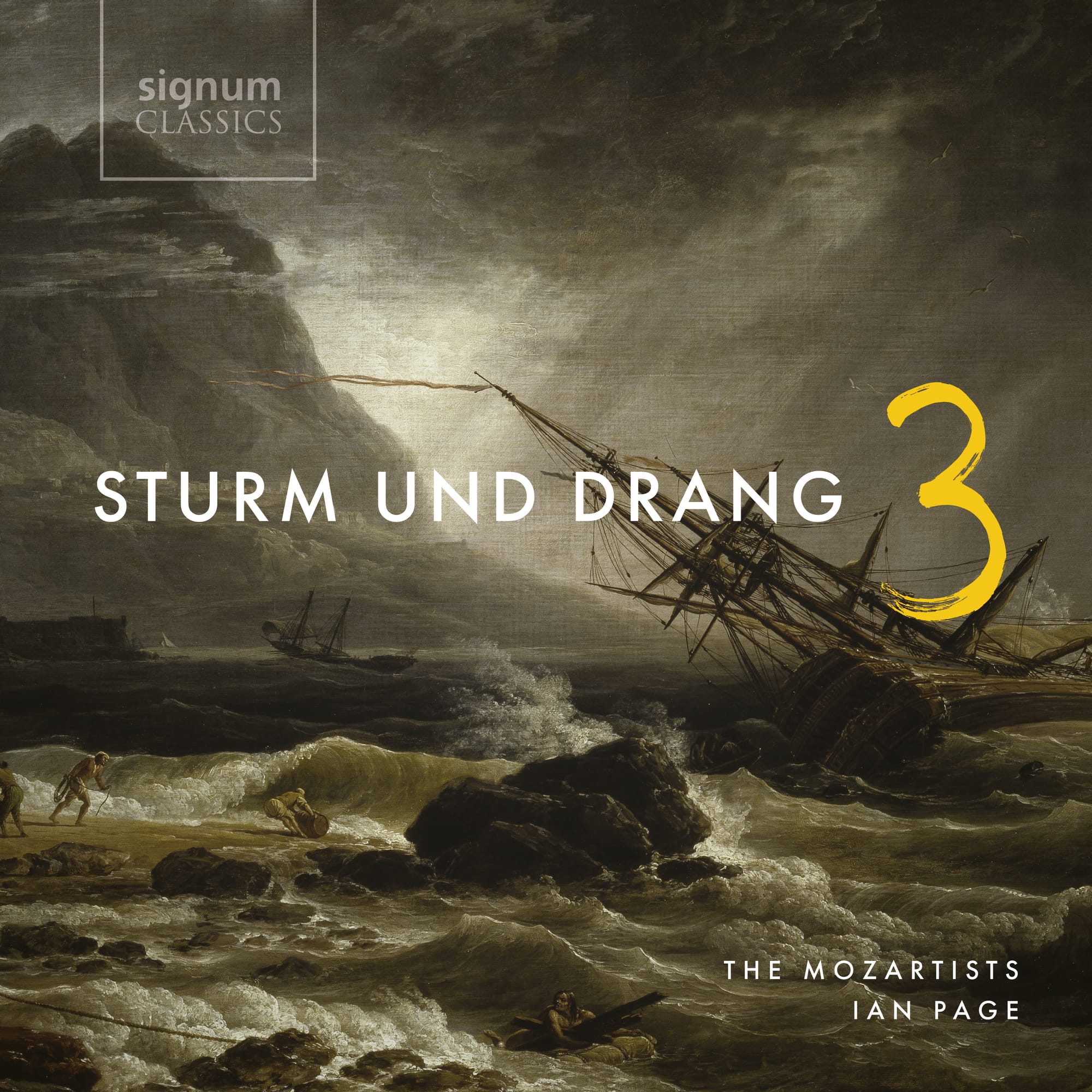The Mozartists: Sturm und Drang #3
Long may this series continue - Page is like a gold miner who continuously comes up with the goods

We have certainly met The Mozartists before on Classical Explorer, most presciently in this post on a concert at London’s Wigmore Hall, as the program there included the Koželuch Symphony on this disc; and also in this post, which covered the second volume of this series of Sturm und Drang discs.
And so they continue with the third volume, with a dramatic selection of works dating from between 1771 and 1788. The programme again culminates with one of Haydn’s great ‘Sturm und Drang’ symphonies – this time arguably the greatest of them all, the ‘Trauer’ – and for the first time in the series Mozart is also represented.
Ian Page introduces the disc in the video below - and you can hear how well, in this video, the engineers have captured the resonant acoustic of St John's, Smith Square while retaining all detail:
The Mozart is indeed quite some Mozart: the Adagio and Fugue in C minor, K 546, dark, intense. The is actually a transcription (of the Adagio and Fugue, K 426, for two pianos, 1783) in 1788 Mozart transcribed it for string orchestra and added a short preludial Adagio. It offers a mix of Baroque form and almost Romantic intensity, and The Mozartists captures its power to perfection.
The soprano here is Emily Pogorelic, who firstly sings Anton Schweitzer's “Er its gekommen ... Zwischen Angst und zwischen Hoffen” from the opera Alceste. This is actually the opera's first aria, and what a way to start off, at least, so Pogorolic would have us believe. She sings with a steely belief, her voice agile and pure (the word come out at some speed), the Mozartist's digging in nicely. While there are more famous Alcestes (Gluck and Lully), this adds a lovely context to how the story fared operatically. Here's the aria, “Zwischen Angst und zwischen Hoffen”. Buckle up!:
I am delighted to see music by Leopold Koželuch here, preserved in bits (as it were, opposed to vinyl!) for eternity. When I reviewed the Wigmore concert, I said this of the piece:
It is difficult to imagine a performance of the piece here, the G minor Symphony, that could do Kozeluch more favours than Page’s - the first movement (of three) nervy, full of energy, the central Adagio replete with rich textures an absolute dream, dissonances from the pair of oboes speaking straight to the heart, the finale a proper Presto, scampering urgently, its power enhanced through The Mozartists’ ultra-tight ensemble.
... and I quoted another ensemble's performance, given the unavailability of the Mozartists. Well, they are here, now; and how. The concentrated first movement is surely the very essence of Sturm und Drang:
Strings are muted throughout the Adagio, an absolute dream of a movement:
The finale returns us to the intensity of the first movement, but includes some more gentle, contrasting passages. There are 22 Piano Concertos by this composer , but only one opera survives (of the six we know he wrote) ...
The second aria is from an opera by Giovanni Paisiello, Annibale in Torino (Hannibal in Turin). This is the twenty-third of Paisiello's eighty-seven (!) operas. The aria begins with a brief but lovely arioso before more stormy seas features an exquisite but brief arioso before leading into a stormy G minor aria. The singer, the character Adriane. laments the assumed death of her lover (who has just leapt off a bridge to avoid capture by Hannibal's forces). Pogorelic has to assume several different styles here: recitative, arioso, recitative again, and aria. The first example is the recitative and, at around 4 minutes, the cavatina, “Onde amicus” (friendly waves). It is worthwhile listening to this complete, as the arioso is gorgeously lyrical, and Pogorolic spins her cantabile like a line of magic thread:
The aria, “Smarrita ... tremante” (I'm lost) is appropriately full of angst, breathlessly rapid. Pogorelic's high register is magisterial, too, and Page ensures his forces are absolutely together:
The other symphony is Haydn: arguably the Sturm und Drang-iest of his Sturm und Drang symphonies, No. 44 in E-Minor, the so-called “Trauer” symphony, most possibly written in 1771. The first movement is concentrated of means (it's basically built on four notes). Around six minutes in, there' a moment of quiet string writing that seems, in the context of this programme, to refer back to the Mozart we heard at the beginning:
The Minuet contains more counterpoint, a strict canon between upper and lower voices before the most lovely of Adagios (link), the strings of the Mozartists as eloquent as one could wish, with woodwind and horns adding a rich glow to the sound. The finale brings us back down to earth - some might say it even takes us to subterranean realms, given the near-demonic frenzy of the writing:
In summary, a worthy continuation; and long may the series continue, too - Ian Page is like a gold miner who continuously comes up with the goods, and The Mozartists seem only too happy to bring this music back to life.
